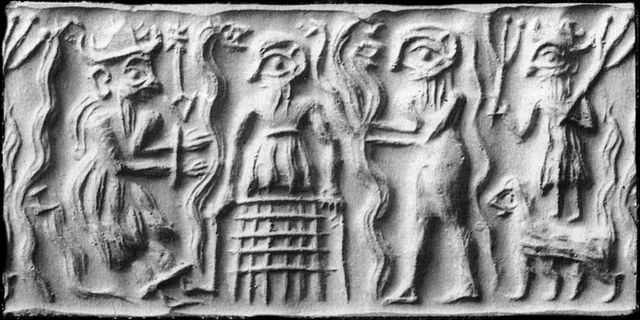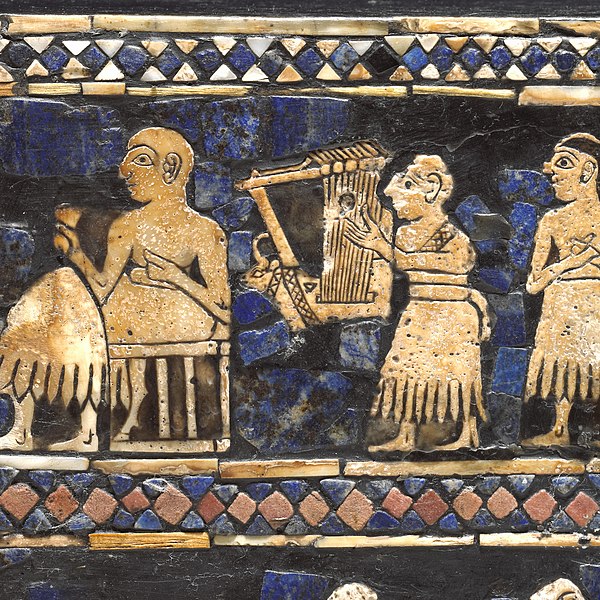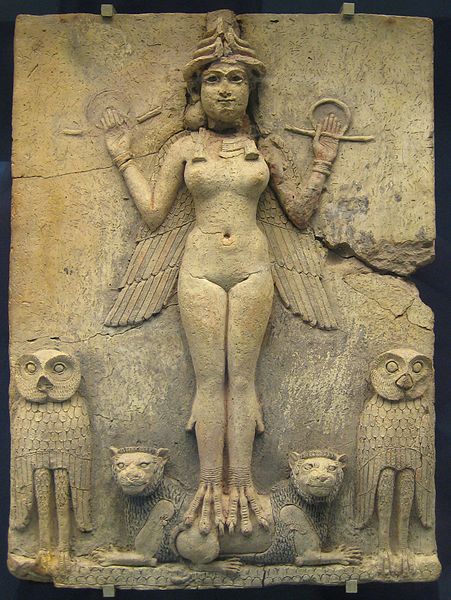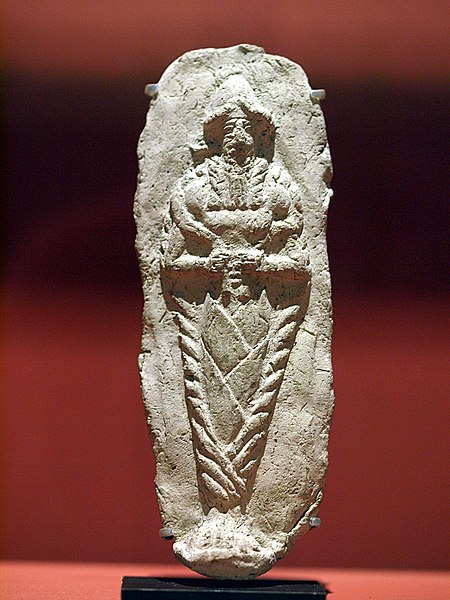In Mesopotamian mythology, Ereshkigal was the goddess of Kur, the land of the dead or underworld in Sumerian mythology. In later myths, she was said to rule Irkalla alongside her husband Nergal. Sometimes her name is given as Irkalla, similar to the way the name Hades was used in Greek mythology for both the underworld and its ruler, and sometimes it is given as Ninkigal, lit. "Lady of the Great Earth".
The "Queen of Night Relief", which dates to the Old Babylonian Period and might represent either Ereshkigal or Ishtar
Ancient Mesopotamian underworld
The ancient Mesopotamian underworld, was the lowermost part of the ancient near eastern cosmos, roughly parallel to the region known as Tartarus from early Greek cosmology. It was described as a dark, dreary cavern located deep below the ground, where inhabitants were believed to continue "a transpositional version of life on earth". The only food or drink was dry dust, but family members of the deceased would pour sacred mineral libations from the earth for them to drink. In the Sumerian underworld, it was initially believed that there was no final judgement of the deceased and the dead were neither punished nor rewarded for their deeds in life.
Ancient Sumerian cylinder seal impression showing the god Dumuzid being tortured in the underworld by galla demons
Detail of the "Peace" panel of the Standard of Ur from the Royal Cemetery at Ur, showing a man playing a lyre. The Sumerians believed that, for the highly privileged, music could alleviate the bleak conditions of the underworld.
The "Queen of Night Relief" (c. nineteenth or eighteenth century BC), which is believed to represent either Ereshkigal or her younger sister Inanna
Terracotta plaque dating to the Amorite Period (c. 2000–1600 BC) showing a dead god (probably Dumuzid) resting in his coffin





